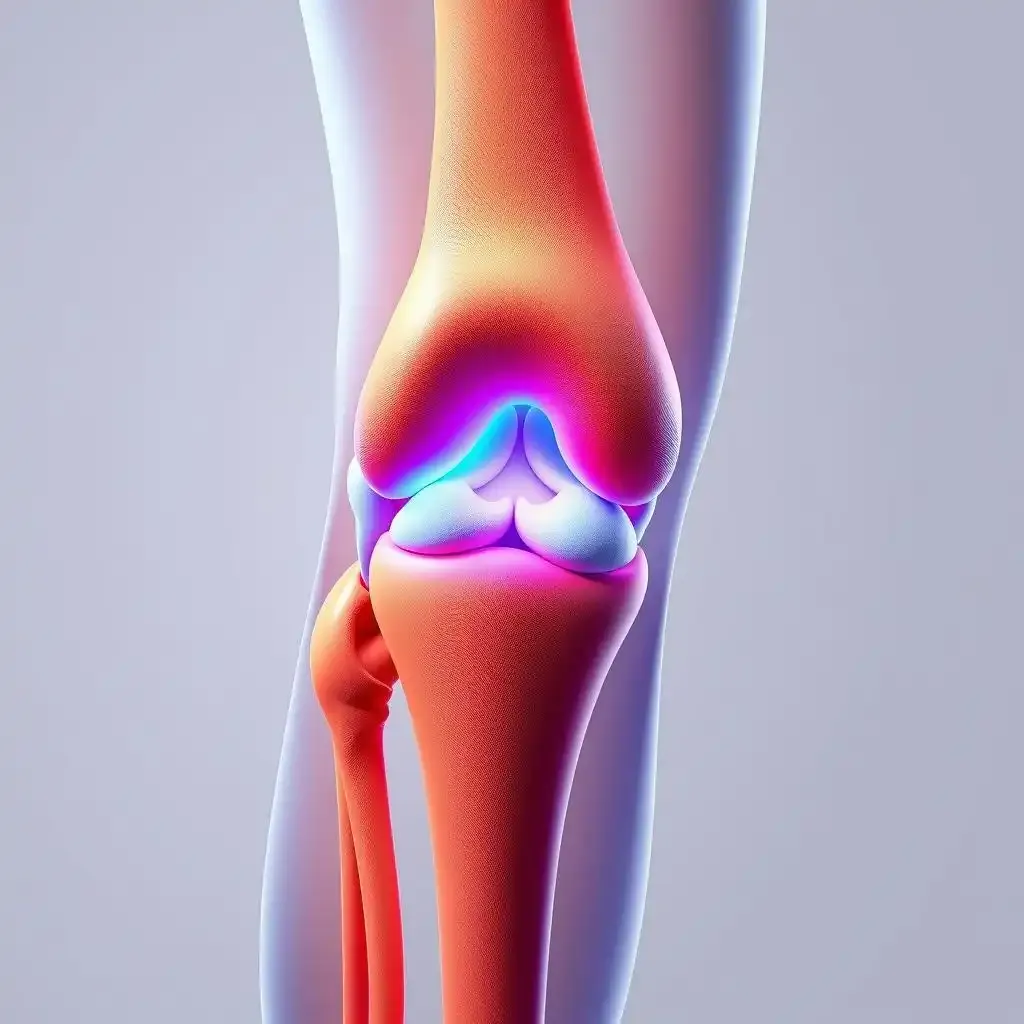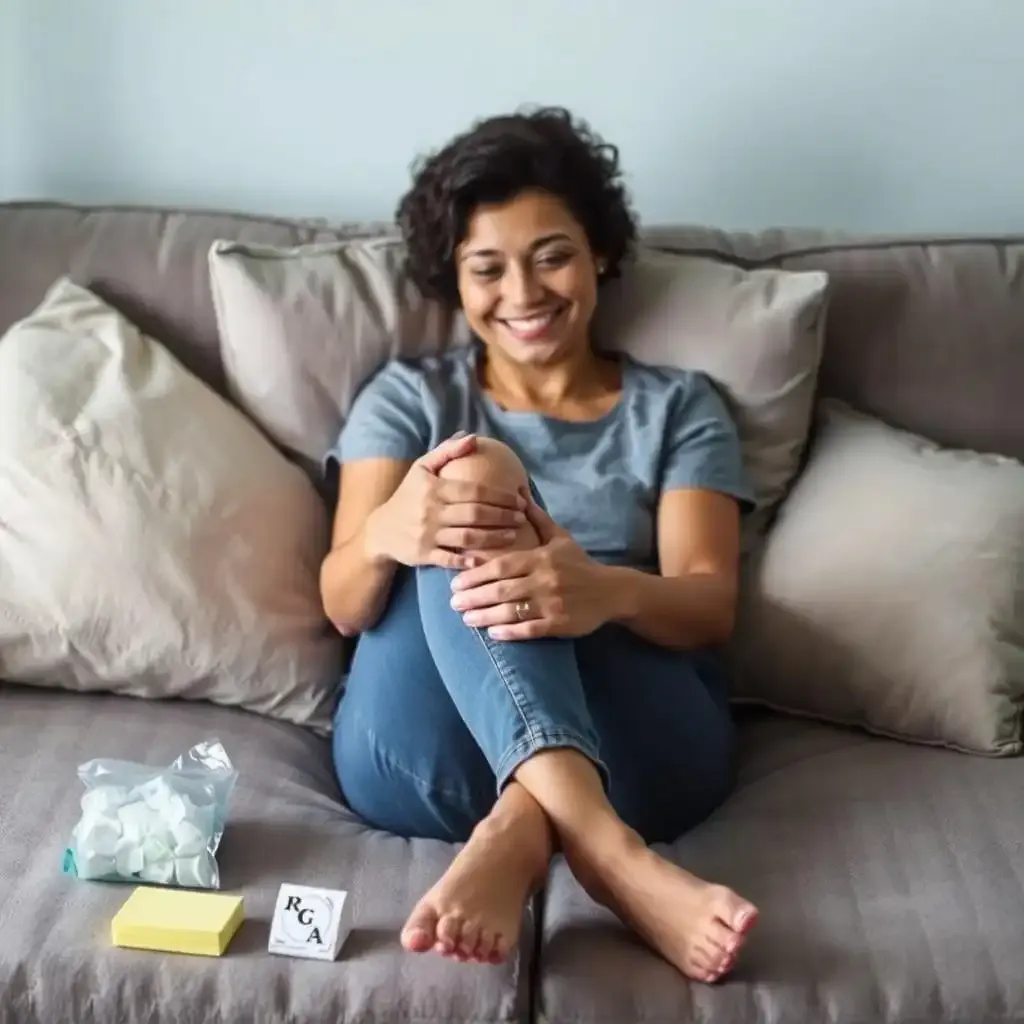Table of Contents
Knee pain – that nagging ache that can sideline you from your favorite activities. It's a common problem, affecting millions, and the search for a "cure for knee joint pain" is a quest many of us begin on. While a magical, instant fix doesn't exist, effective management is definitely within reach. This article will explore a range of approaches to alleviate knee pain, from simple home remedies you can try today to more advanced medical interventions. We'll look at the causes, discuss effective strategies, and dispel some myths surrounding knee pain relief. Remember, understanding your knee pain is the first step towards finding the right solution for you. We'll cover everything from the basic RICE method to the latest advancements in treatment, so you can guide your path to pain relief with confidence. Let's get started on your trip to a healthier, happier knee.
Understanding and Managing Knee Joint Pain
Understanding And Managing Knee Joint Pain
What's Going On In There?
Hey there! So, you're dealing with knee pain, huh? It's like having a tiny gremlin inside your knee, constantly nagging you. Don't worry, you're not alone! Loads of people experience knee pain, from little aches to big problems. It could be from an injury, like twisting your knee while playing soccer, or it could be from something that develops slowly, like arthritis. Think of your knee joint as a super cool hinge – it lets you bend, stretch and jump around! But, just like any hinge, if it's not looked after properly, it can get creaky and painful. Understanding what’s causing your pain is the first step. Is it sharp and sudden, or a dull ache? Does it hurt more when you move, or when you're just resting? Knowing this helps figure out the best way to treat it. Sometimes, a little rest and ice does the trick, but other times, you might need to see a doctor. For some really helpful tips on managing discomfort, check out our guide on knee pain relief.
Type of Pain | Possible Cause | What to Do |
|---|---|---|
Sharp, sudden pain | Injury (sprain, fracture) | RICE method (Rest, Ice, Compression, Elevation), see a doctor |
Dull, aching pain | Arthritis, overuse | Gentle exercise, heat/cold therapy, see a doctor |
Taking Charge of Your Knee Pain
Once you have a better idea of what's causing your knee pain, you can start to manage it. Think of your knee like a precious vase – you wouldn't want to drop it, right? Similarly, you need to treat your knee with care. One of the best things you can do is to stay active! This might sound crazy if your knee hurts, but gentle exercise and stretching can actually help strengthen the muscles around your knee, making it more stable and less prone to pain. Imagine those muscles as tiny bodyguards protecting your knee joint! Walking, swimming, or cycling are all great low-impact options. But, remember to listen to your body and stop if it hurts. For more information on managing your knee discomfort, check out our article on knee discomfort. We also have a great article on knees that are in pain if you're finding it difficult to manage your pain.
- Rest: Give your knee a break when it needs it.
- Ice: Apply ice packs to reduce swelling.
- Compression: Use a bandage to support your knee.
- Elevation: Keep your leg elevated to reduce swelling.
Home Remedies and SelfCare for Knee Joint Pain
Home Remedies And Selfcare For Knee Joint Pain
RICE: Your Knee's Best Friend
Okay, so you've got a bit of a knee problem. Maybe you twisted it playing tag, or maybe it's just feeling achy. Before you panic, let's try something simple: RICE. It sounds like a breakfast cereal, but it's actually a super-effective first-aid method. RICE stands for Rest, Ice, Compression, and Elevation. Think of it like a superhero squad for your knee! Rest means giving your knee a break – no running around like a crazy chicken! Ice helps to reduce swelling, like a tiny ice-cream cone soothing a boo-boo. Compression, using a bandage, helps to keep everything stable, like a supportive hug. And elevation? Just prop your leg up to stop swelling from building up. It's like giving your knee a comfy pillow! If the pain persists despite trying RICE, you might want to check out our guide on for more advanced tips.
RICE Step | What to Do | Why It Helps |
|---|---|---|
Rest | Avoid activities that aggravate the pain | Allows tissues to heal |
Ice | Apply ice packs for 15-20 minutes at a time | Reduces swelling and inflammation |
Compression | Use a bandage to support the knee | Provides stability and reduces swelling |
Elevation | Keep your leg elevated above your heart | Reduces swelling and improves blood flow |
Movement is Medicine (Seriously!)
Now, I know what you're thinking: "My knee hurts! Why would I *move* it?!" But trust me on this one. Gentle exercise and stretching are actually amazing for your knee. Think of your knee joint as a bicycle chain – if it's stiff and rusty, it won't work properly! Gentle movement keeps it lubricated and flexible. Try some simple stretches like bending and straightening your leg, or walking short distances. Start slowly and don't push yourself too hard. If you're not sure what exercises are right for you, check out our post on for some ideas. Remember, it's a marathon, not a sprint! We're building up strength, not racing to the finish line.
- Short walks
- Gentle knee bends
- Swimming (low impact!)
Heat Things Up (Or Cool Them Down!)
Sometimes, heat can feel really good on a sore knee. It's like a warm hug for your joint! A warm bath or a heating pad can help to relax the muscles and ease the pain. Other times, though, ice is the way to go. Ice helps to reduce swelling and inflammation, kind of like a tiny superhero battling the bad guys in your knee. Experiment to see what works best for you. Everyone is different, and what works for one person might not work for another. If you're still struggling with pain despite trying these self-care tips, it's always a good idea to chat with a doctor or physical therapist. They can give you personalized advice and help you create a plan to get your knee feeling great again. For more info on managing your knee pain, check out our article on .
"The body is a temple, but it's a temple that needs regular maintenance." - Unknown Wise Person (Probably)
Professional Treatments and Advanced Options for Knee Joint Pain
Okay, so RICE and home remedies haven't quite banished your knee gremlins? Don't worry, you're not alone! Sometimes, you need the big guns – professional help. Think of it like this: if your bike's chain is completely wrecked, you wouldn't just try to oil it, right? You'd take it to a mechanic! Seeing a doctor or physical therapist is a crucial step. They can properly diagnose what's going on with your knee, and they've got a whole arsenal of tricks up their sleeves. They might suggest things like physical therapy – a fancy way of saying exercises personalized just for you to strengthen your knee and get it moving smoothly again. Or maybe they'll recommend other treatments, such as medications to ease pain and inflammation. This could include over-the-counter pain relievers, or something stronger if needed.
- Physical therapy
- Medications (pain relievers, anti-inflammatories)
- Injections (cortisone shots)
For example, my aunt had terrible knee pain that just wouldn't go away, no matter how much she iced it. Her doctor diagnosed arthritis and recommended physical therapy. It took a while, but she's now able to walk and garden again without pain. It's amazing what a little professional guidance can do! Sometimes, more advanced treatments might be necessary. This could involve surgery, if the damage is severe. This isn't something to be scared of; many people have successful knee surgeries and go on to live active, pain-free lives. But it's always a good idea to explore all the less invasive options first, such as those we've discussed here and in our guide on .
Treatment | Description | When it's used |
|---|---|---|
Physical therapy | Exercises and stretches to strengthen muscles | For mild to moderate pain |
Medications | Pain relievers and anti-inflammatories | To reduce pain and swelling |
Injections | Cortisone shots to reduce inflammation | For severe inflammation |
Surgery | Repair or replace damaged joint | For severe damage |
Remember, finding the right treatment involves a bit of detective work. It's like solving a mystery! You need to figure out the root cause of the problem before you can fix it. That's why talking to a doctor is so important. They're the experts, and they can help you figure out the best course of action. They can also help you avoid doing anything that could make your knee pain worse. If you're still feeling lost, check out our article on for more insights and tips.
"The best way to predict the future is to create it." – Abraham Lincoln (Probably didn't say this about knees, but it fits!)
Finding Your Path to Relief
While a complete "cure for knee joint pain" might be elusive for some conditions, effective management is entirely possible. By understanding the causes of your pain and exploring the various treatment options – from simple home remedies to professional medical interventions – you can find a strategy that works for you. Remember, consistency and patience are key. Don't hesitate to consult with a healthcare professional for personalized advice and guidance to help you find the best path toward a pain-free life. Your trip to a healthier knee starts now.